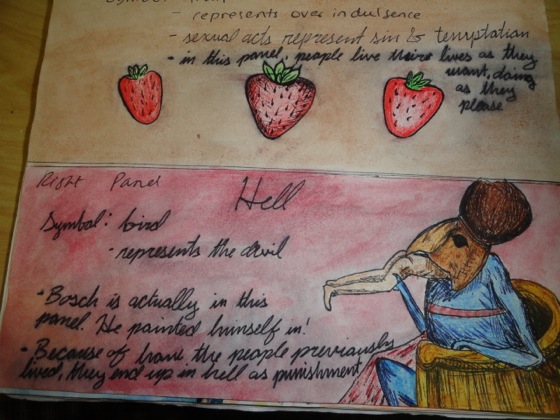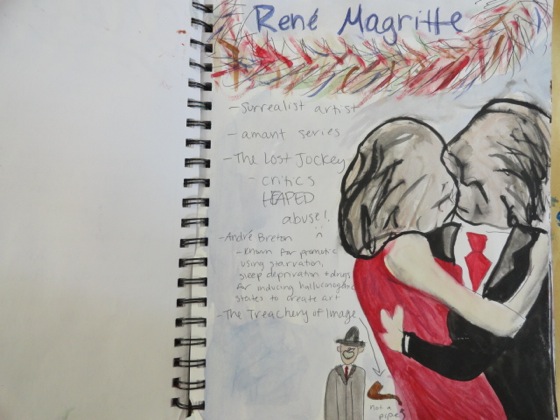Art Teachers don’t mind when their students draw in class. Unless, of course, they are taking notes. As an Art History teacher, my students have taken their fair share of notes. After all, how else can they capture all the juicy details of the history of art unless they write it down? The last thing I would ever want is for my students to doodle during my lectures. Or would I?
Last year, instead of just notes, I wanted the students to create visual journals. I thought the addition of their own drawings along with written notes would be beneficial, especially for the visual learners. In theory, the idea was sound but in practice it had many flaws.
During my lectures, the students would create elaborate drawings of the images embedded in my Powerpoints. The flow of my presentations would be halted over and over again while students created beautiful, yet time consuming images.
In my search to perfect the idea of visual note taking, I came across a TEDx Talk by Rachel Smith titled Drawing in Class. This video not only confirmed everything I was thinking, it helped correct the issues my class was having.
In essence, Rachel Smith gets paid to take notes at meetings. Instead of writing words in a notebook, she graphically records everything that is said on large sheets of paper. These graphic recordings are doodles that allow everyone in the room to see the big picture.
Instead of creating elaborate drawings, Rachel relies on her internal library of images or stored symbols. These images are simple graphics that she can reproduce quickly.
As Rachel explains in her TEDx Talk, the purpose of notes is to take what you are hearing and hook it to an internal frame of reference. Learning occurs when you take new information and hook it to old information. With written notes, it is possible to write and still not understand anything a teacher is saying. With visual note taking, you have to listen to the new information and then hook it to a stored symbol image already in your mind.
When I first saw Rachel’s TEDx Talk, it was June, the end of the year. I played the video for my students on the last day of school. They yelled at me, “Why didn’t you show this at the beginning of the year?!”
This year when I teach my class, I will show Rachel’s talk on day one. Next, I will tell all the wonderful stories that the history of art has to offer. While I’m talking, I expect my students to doodle in class, using their internal library of images to illustrate the stories.
Do you encourage doodling in class?
Have you used visual journals as a method of note taking? How did it go?
Magazine articles and podcasts are opinions of professional education contributors and do not necessarily represent the position of the Art of Education University (AOEU) or its academic offerings. Contributors use terms in the way they are most often talked about in the scope of their educational experiences.






